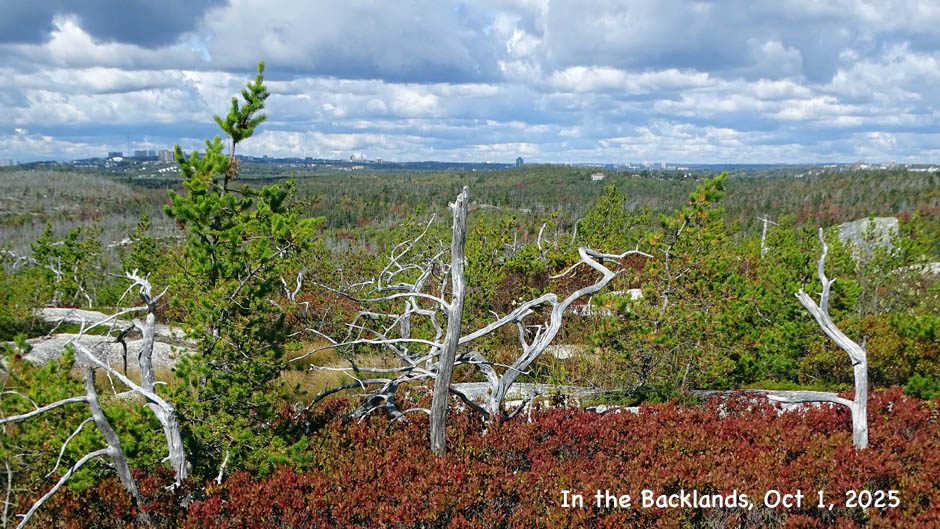This article was published in The Chebucto News Vol.24 • No.5 January 2023
by Cathy Vaughan
The canary in the coal mine was a method of warning miners to evacuate the mine. Although much more sophisticated instruments for early warnings of potential dangers are in place now for our miners, the bright yellow dead canary is still a poignant image that something wasn’t quite right underground.
Above ground, healthy bird populations are also used as early-warning- signals of the impact of climate change, global warming, weather abnormalities, and loss of ecosystems. Birds are sensitive to changes in their habitat, and because they are highly visible and countable, scientists use statistics on birds to help measure the health of our environments.
The Williams Lake Conservation Company (WLCC) and their partner organizations in the Backlands Coalition are local environmental stewardship groups of enthusiastic volunteers and citizen-scientists who are collaborating with the government to survey and record bird populations around the Spryfield area.
Sparrows, Hawks & Doves (SHD) is a WLCC project with the Backlands Coalition, along with the Urban Farm Museum Society of Spryfield, and is funded by an HRM Community Project Grant. Bird-enthusiasts tromp through Spryfield forests, wetlands, and rugged terrain to collect data on resident birds and their habitats.
Collecting data on the Purcells Cove Backlands and Williams Lake watershed on our local bird population also provides evidence-based science on the health of ecosystems and the environment. This scientific data can be used by conservation groups to advocate for protecting the natural habitats that provide nesting areas and a protective tree canopy for resident bird populations.
The Backlands and the Williams Lake watershed area appear to be rugged terrain, but the SHD’s final report suggests that the health and survival of wildlife depends on a robust resilient habitat. Whenever there are threats to the stability of this area we need to be proactive by advocating strongly for the protection of the wildlife and land; establishing corridors for the movement of plants and animals between habitats; and conserving the waterways, bogs and wetlands that promote the health and survival of the Backlands and Williams Lake.
The good news is that the Backlands and its watershed are alive with birds! “Very exciting data from our field trips into the Backlands and the Williams Lake area. From April to August of 2021 our data, plus eBird recordings, estimate a minimum of 97 different species of birds call the Backlands home at various time of the year and at various points in their migrations,” reported Martha Leary, coordinator of the WLCC bird survey project. “This is a strong indicator that our conservation and protection efforts are significant and necessary. We need to keep track of the diversity of our local bird species. We must stay vigilant and continue to protect and improve these key habitats of the Backlands and Williams Lake watershed.”
Spryfield has a growing residential population of about 26,000 folks living within 30 officially recognized communities in District 11. According to the municipality, Spryfield is the most densely populated and fastest growing area of District 11. It is comprised of newly developed neighbourhoods, older established communities, and has a growing commercial main street. Spryfield is also surrounded by forested parks, accessible lakes and natural wilderness areas with large populations of bird residents as well.
According to Birds Canada, our national organization dedicated to bird conservation, there are several major threats to the health of bird populations. The loss of bird habitat has severely impacted many bird species in recent decades. Urban development, chemical pesticides, bright lights and collisions with windows, wind turbines, and power lines were also listed.
“Expanding conserved and protected natural areas plays a vital role in restoring healthy, resilient ecosystems and contributes to the recovery of species at risk,” stated Steven Guilbeault, federal Minister of Environment and Climate Change, in his recent news release on Nova Scotia Nature Trust’s (NSNT) announcement of the addition of two-hectares of protected urban wilderness in the Purcells Cove Backlands.
“We have been successful in the acquisition of another parcel of land in the Purcells Cove Backlands. The 2-hectare-parcel lies adjacent to our existing lands in the area. It contains a portion of shoreline along Purcell’s Pond and a stretch of the iconic Backlands habitat that makes this region so special,” said Keith Spafford, Landowner Outreach Lead, with NS Nature Trust.
This announcement made the front-page of the Chronicle Herald on December 22. The Nature Trust’s Executive Director, Bonnie Sutherland said that there is growing public awareness about bird population crashes, more species at risk, the destruction of habitat, and the resulting impact on clean water and air.
“We have been able to put our generous government partners’ historic investments in biodiversity to work locally, saving irreplaceable natural areas that will be here for generations to come,” stated Sutherland.
“The Nature Trust’s procurement of such beautiful land in the Backlands is such a gift and supports our collective efforts to protect this important watershed, its fragile ecosystems, significant wetlands and essential bird habitats,” says Martha Leary of WLCC.
“The work that we do would not be possible without the help of our dedicated volunteers, generous donors and the landowners that we partner with. We also need to give thanks to the efforts of organizations like the Backlands Coalition who foster community support and love for this area,” said Keith Spafford of the Nature Trust.
It does take a collective effort to be vigilant in continuing to protect rugged Backlands and important watersheds in our Spryfield community. Locally led citizen action-groups, government agencies, environmentally conscious land owners, our local politicians, and you are all part of the protection of the natural wild lands and their bird inhabitants around Spryfield.
Healthy habitats = healthy inhabitants.

